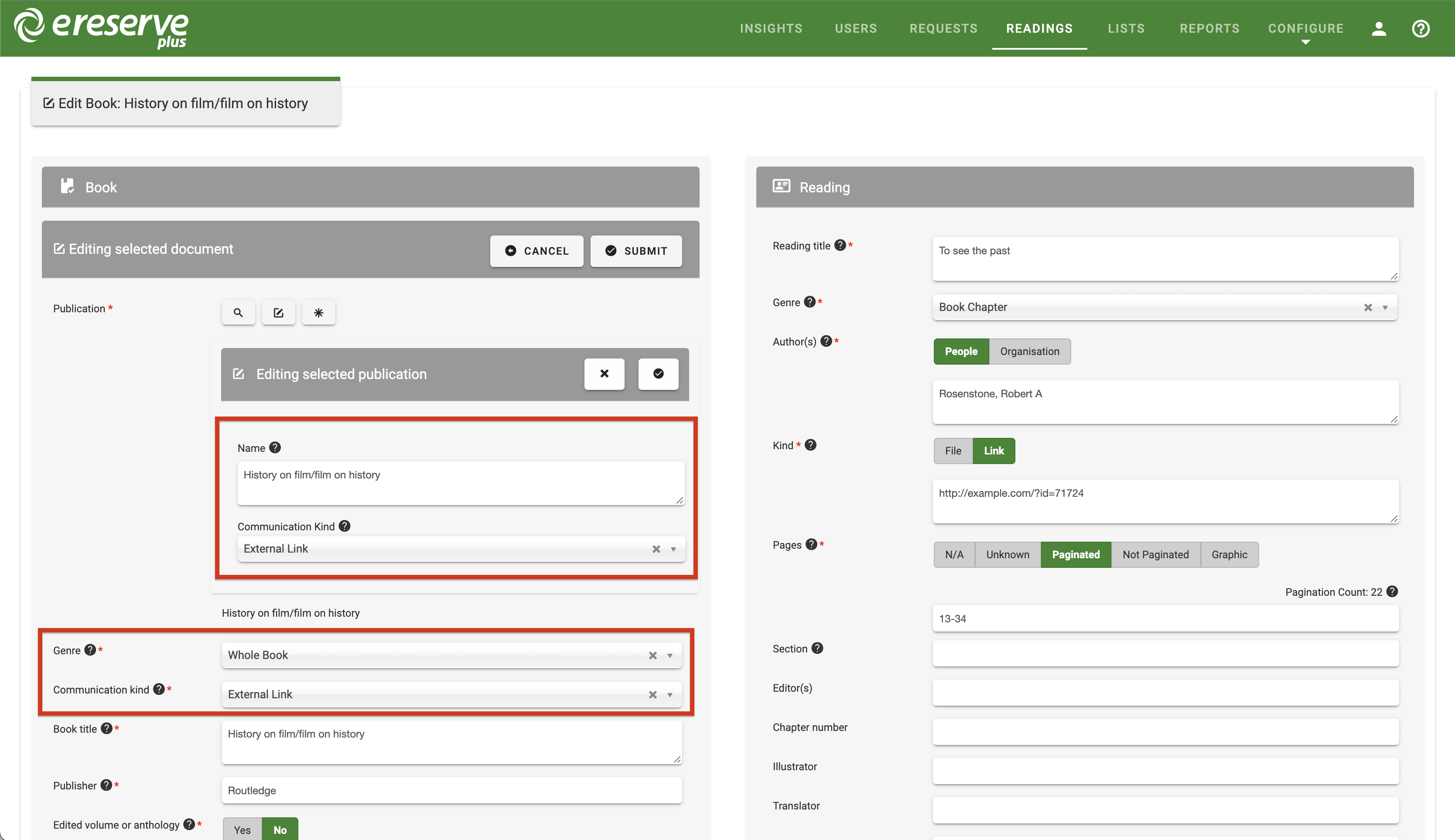
Edit Reading - Two titles and Communication Kinds, why?
Q: Why do I see two titles and communication kinds when I edit a reading?
A: To best answer this question it will help to have some background on how eReserve Plus stores readings.
When a reading is created behind the scenes it breaks it into 3 primary records: Publication, Source Document and Reading.
The Publication is a grouping mechanism for source documents (e.g. a Book with many editions where each Source Document is one edition or a Journal where each Source Document is an issue of that journal, etc).
Each Source Document then has one or more Readings which are parts of the Source Document. These readings can be a couple of pages of book, a chapter of book, an article of a journal, etc.
The communication kind is set at the Publication level to act as a default for it's subsequent documents. This comes into play when readings are imported into eReserve Plus through something like RIS. So when a new Source Document is needed to be created (perhaps a new issue of a journal) then the communication kind is drawn from the publication as a default.
We also recognise that in some cases a source document may have a different communication kind to that of the Publication. So the library staff member has the opportunity to make the differentiation. An example of this would be a source document that the Institution has purchased the rights to make it fully available to a course in which case it may have a different communication kind to that of the Publication.
So when editing a Reading you will have two places where you can change the title or the communication kind depending on your circumstances.
